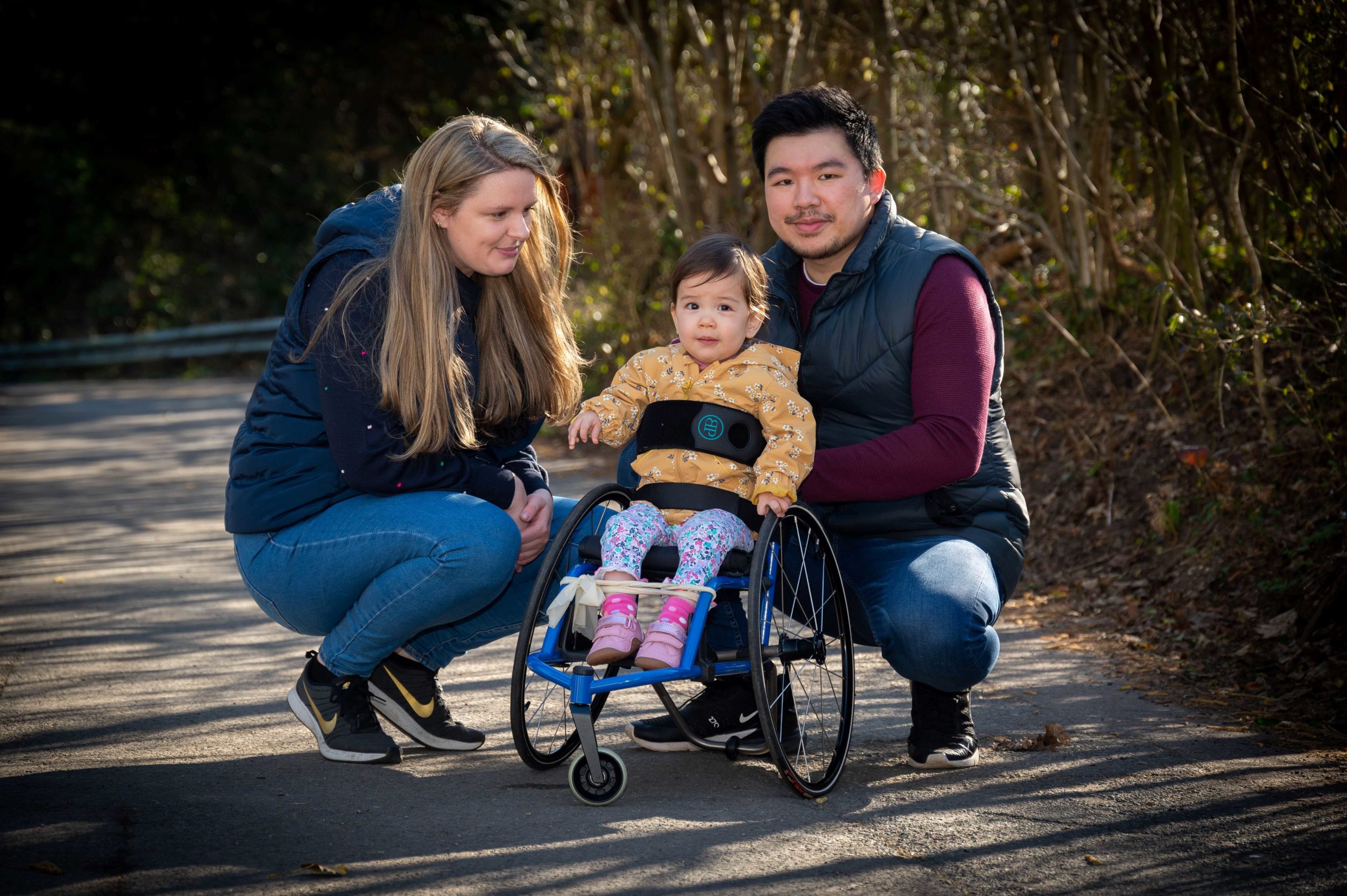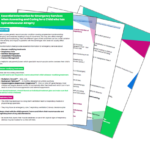Children (0-12 years) Health & Wellbeing

Children (0-12 years) Health & Wellbeing
Last updated: October 2024
Your GP or local hospital consultant can refer your child to a specialist neuromuscular centre:
- UK Regional Neuromuscular Centres for children >
- Muscular Dystrophy UK also has other information about specialist neuromuscular centres in the UK.
Your team may refer to:
These were written before the new disease-modifying drug treatments became more widely available. Even then, recommended standards of care for children, young people and adults varied and were based on:
- whether they could sit, stand or walk
- whether their breathing was affected by their SMA
- what other daily living activities they could manage.
You can follow the links to find:
The individual chapters in the guide:
- Chapter 1 – Introduction
- Chapter 2 – Genetics and diagnosis
- Chapter 3 – Physiotherapy and Rehabilitation
- Chapter 4 – Orthopaedic Management
- Chapter 5 – Nutrition, Growth and Bone Health
- Chapter 6 – Breathing (Respiratory and Pulmonary Care)
- Chapter 7 – Other Organs and Systems
- Chapter 8 – Medication
- Chapter 9 – Emergency Care
- Chapter 10 – Anaesthetics
- Chapter 11 – Administration of new treatments for SMA
- Chapter 12 – Ethics and Choices
As all children respond to treatment and develop differently, the impact of SMA on their muscle strength and joints will vary. Their SMA is, though, likely in some way to impact on their ability to keep up with daily activities.
As all children respond to treatment and develop differently, the impact of SMA on the muscles they use for breathing will vary. There are different ways of helping to manage breathing challenges.
Impact of SMA on Eating and Diet
As all children respond to treatment and develop differently, the impact of SMA on their muscles will vary. The main eating and diet related problems associated with SMA can be:
- difficulty swallowing
- weight management
- movement of food through the digestive system
These challenges may be common for children who are ‘non-sitters’ and children who are ‘sitters’, but they are rare for children who are ‘walkers’.
Management and Care
There are different ways of helping to manage these eating and diet challenges. Your child’s clinical team will assess your child and, if needed, will involve a speech and language therapist (SALT) and dietitian in their care. They will have a full discussion with you about best care and management.
If your child has been recently diagnosed, you may also find helpful information in whichever of these SMA UK guides is the ‘best fit’ for your child:
- Looking after your child who has SMA Type 1 >
- Looking after your child who has SMA Type 2 >
- Looking after your child who has SMA Type 3 >
Conversations with Healthcare Professionals
Maxwell (who has SMA Type 2) spoke to Dr Graeme O’Connor (Research Lead for Dietetics at GOSH) about diet and nutrition in SMA:
Recorded: November 2023
In 2022, SMA Europe ran workshops on nutrition. You can watch the videos on their YouTube channel.
Impact Of SMA On The Spine, Hips & Bones
SMA commonly causes bone and muscle (orthopaedic) problems. Even with drug treatment, SMA can weaken the muscles which support the spine. Without this support, the spine can be pulled by gravity and curve:
- When the spine starts to curve sideways into a ‘C’ or ‘S’ shape it is called a scoliosis.
- When the spine bends forwards it is called, a ‘kyphosis’.
It is estimated that as they grow:
- 60 – 90% of ‘non-sitters’ and sitters’ develop a curvature
- 50% of ‘walkers’ develop a curvature.
It is also common for ‘non-sitters’ and ‘sitters’ to have unstable hips which may affect one hip or both. They are also at higher risk of bone fractures.
Management and Care
If your child has been recently diagnosed, you may also find helpful information in whichever of these SMA UK guides is the ‘best fit’ for your child:
- Looking after your child who has SMA Type 1 >
- Looking after your child who has SMA Type 2 >
- Looking after your child who has SMA Type 3 >
Spinal Surgery
Your child’s spine will be monitored. If their spine is curving beyond a certain point, surgery may be suggested. If the clinical team has raised this and you want to discuss it with your child, you may find it helpful to look at the Spine, Hips and Bones Section written for teenagers.
The development of these skills in all children impacts hugely on their ability to join in with family, friends, school and nursery.
Our webinar with Giovanni Baranello (Consultant Neurologist at GOSH) and Alison Felton (Speech & Language Therapist at Alder Hey) focuses on children who have SMA Type 1. It covers research, developmental signs, communication aids, recommended strategies that may be needed and how local and specialist teams can help:
Alison also suggested a number of useful resources:
What is possible for my child?
There are now three drug treatments funded by the NHS for SMA, though not all are options for all children.
Though SMA affects each child differently and responses to treatment vary, it is widely agreed that for all three treatments, the earlier they are given, the better the potential outcomes. But children do have to be well enough to start (or continue) treatment. This may mean a delay, pause, alternative option or stopping if risks outweigh potential benefits. Your child’s team will talk with you about the different treatments, whether or not your child is eligible, and the potential risks and benefits for your child.
A family experience of receiving treatment
In this NHS Video, parent Charlie talks about their experience of Rupert’s diagnosis, his Zolgensma™ treatment, and the following months:
Recorded January 2022
What outcomes have families seen?
Many families share their experiences on social media. For some these can be useful. However, no two families have the same personal circumstances. No two children are impacted in the same way by SMA. What treatment is most appropriate for them, how they will react and what the outcomes are may vary considerably.
It is probably fair to say that, on the whole, families who have chosen treatments and seen positive outcomes post their ‘stories’ publicly. So do talk through what you see on social media with your medical team.
All children experience a range of emotional ups-and-downs as they navigate our complex world. Disabled children can face additional stresses and challenges. They may become anxious, frustrated or angry about the barriers they face.
Some children have difficulty opening their mouths and with swallowing. This can make cleaning teeth and dental care challenging. Added to this, local dentists may not be wheelchair accessible. They may not be set up to treat children who need careful positioning.
Your child may need to be seen by the NHS Special Care Dental Service. Ask your child’s speech language therapist, dietitian or other member of their clinical team or GP for advice.
For More Information see:
Your child’s team should work with you to develop an Emergency Health Plan (EHP). This records the treatment you wish your child to receive if there is an emergency or if their health deteriorates. Although these discussions can be difficult, they are important and should be had before a child is unwell. If your child has breathing and swallowing difficulties you would expect a more detailed plan.
With your permission, this plan can be shared with professionals supporting your child, so that everyone is aware of your wishes. This can include ambulance services. You should have your own copy of your child’s EHP so that you can give it to hospital services if you are away from your home area.
Often, staff in Accident and Emergency (A & E) have never come across SMA. We have worked with clinical experts to produce:

Though drug treatments have been life changing, some children remain vulnerable to the potential for life threatening illness and complications.
An Anticipatory Care Plan (ACP) sets out what actions should be taken if a child’s condition changes in this way. It is agreed by parents and the team caring for their child.
Planning ahead means that parents (and when appropriate, their child) will have thought through how and where their child will be cared for, rather than being faced with difficult decisions at a time when they are likely to feel exhausted and confused.
Together for Short Lives / Care Planning in Advance > gives more information including some of the questions to consider when making a plan.
